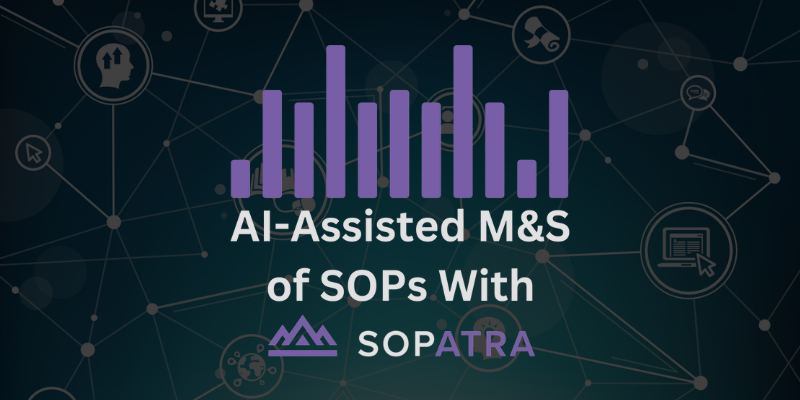AI-Assisted M&S of SOPs With Sopatra Webinar
Don't feel like reading? Watch the webinar recording instead!
.png)
Would you rather watch instead? Visit the webinar recording!
Explore the fundamental concepts of action diagrams and their significance in business process modeling with this debrief from our webinar, "Functional Modeling 101." This blog uncovers functional models, beginning with action diagrams in Innoslate, our full lifecycle tool that empowers users to express functionality and behavior in a structured and visual manner.
Action diagrams serve as a cornerstone in business process modeling, providing a visual representation of actions, data flows, and resource allocations within a process. These diagrams offer a sequential view from left to right, showcasing the flow of actions and data elements between different components. Innoslate's action diagrams can be transformed into various views such as sequence diagrams, activity diagrams, and timeline diagrams, offering a comprehensive perspective on process dynamics.
Central to action diagrams is the depiction of data flows and allocations. Data elements are represented in distinct colors, with green and gray highlighting the passage of information between actions. Additionally, resources are symbolized as purple polygons, signifying their role in the execution of modeled scenarios. By visualizing data flows and allocations, users can gain insights into process efficiency and resource utilization.

Innoslate provides a user-friendly interface equipped with a palette of elements that enable users to construct detailed action diagrams for modeling scenarios. Whether simulating operational threads or mapping out complex business processes, Innoslate offers a powerful platform for creating informative and structured diagrams. By leveraging the capabilities of Innoslate, users can effectively model and analyze various scenarios to optimize process performance.
One of the key features of Innoslate is its integration with Discrete Event and Monte Carlo simulators, allowing users to execute and analyze their models. These simulators enable users to test different scenarios, evaluate process efficiency, and make informed decisions based on simulation results. By simulating scenarios, users can identify bottlenecks, optimize resource allocation, and enhance overall process performance.
Our webinar, "Functional Modeling 101," provided viewers with a comprehensive overview of action diagrams and their role in business process modeling. By harnessing the power of Innoslate, users can create detailed and structured models, simulate scenarios, and gain valuable insights into process dynamics. Explore the world of action diagrams in Innoslate and unlock the potential for enhanced business process modeling.
Have questions about model-based systems engineering or requirements management? Talk to an expert and see how Innoslate can streamline your projects from start to finish.

Don't feel like reading? Watch the webinar recording instead!

What is Lifecycle Modeling Language (LML)? The Lifecycle Modeling Language (LML) is a simple, extensible, open-source modeling language designed to...
-1.png)
Don't feel up to reading? Watch the recording! What is Verification & Validation (V&V)? The common definitions for V&V are: verification is “the...